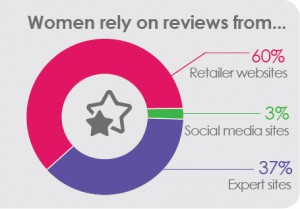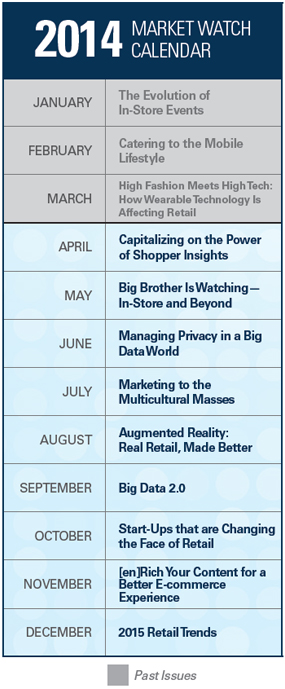 By Retail News Insider
By Retail News Insider
For over 25 years, Interactions has been known as a leader in event marketing—hosting product demonstration events for retailers and brands around the globe. Now we’re taking our years of experience and honed consumer marketing capabilities to the next level by introducing a new series of custom shopper insight reports—Retail Perceptions. Based on primary research that pairs Interactions’ advanced reporting and analytics systems with its insights capabilities, Retail Perceptions is designed to reveal the details on the most current trends in shopper behavior and opinions that can assist retailers and brands in better understanding “the why behind the buy.”
“Our motivation behind conducting this research is to continually drive competitive advantages for retail and brand partners while creating differentiation through improved shopper behavioral knowledge that is directly affecting retail today,” says Giovanni DeMeo, Vice President of Global Marketing and Analytics for Interactions. “The more we know about how shoppers are using available resources (such as online and mobile), the better we are able to provide value to the retailers and brands that we work with.”
The first issue of Retail Perceptions focuses on “The Power of Persuasion”—specifically how online product reviews are used and how they are affecting women’s purchasing behaviors—both in-store and online. You may ask why we are investigating the female shopper when headline after headline shows men’s role in household shopping is increasing. Well despite the increasing role of male shoppers, women still represent the majority of shoppers and are on track to control two-thirds of all consumer wealth over the next decade. Combine that with our increasingly connected lives and the almost endless options available to shoppers, and the need seems clear to better understand just how social media, review websites, shopper ratings and other online forums influence those who hold the retail purse-strings today—and will continue to in the future.
“Everybody knows that the web is a major component of the retail experience,” says DeMeo. “What’s in question is the influence of product reviews as it relates to driving sales—both in terms of what products are sold and where they’re sold. This first Retail Perceptions survey seeks to help answer those questions.”
The survey revealed a number of notable and actionable insights, among them the fact that 91 percent of women do online product research before making a purchase, even if they plan to make that purchase in a brick-and-mortar store. Approximately one-third (30 percent) of women use a mobile device to conduct research and 37 percent of those mobile users say they conduct research while in-store and at the shelf.

“On the one hand, these numbers speak to the impact that mobile is having on the retail industry,” says DeMeo. “But it’s clear that mobile isn’t the only game in town. Retailers and brands need to adapt to provide broad solutions that deliver not just a small portion of consumers the information they want when they want it, but as close to 100 percent of consumers as possible.”
When it comes to what types of sites consumers use to research product information, the survey revealed some unexpected results given the strong focus on social media in recent years. Only 3 percent of women said reviews on social media sites were their preferred source for product information. Even for 18 to 29 year olds, that number only rose to 8.5 percent.
“Peer influence may not be as big as we thought, at least when it comes to product information and reviews,” says DeMeo. “It appears that consumers are influenced to a much greater extent by the opinions of unknown shoppers who have purchased similar products versus the opinions of their direct peer groups.”
So if it’s not social media, where are women going for reviews and product information? By and large, the retailers’ websites themselves: 60 percent of women rely on reviews found directly on retailers’ sites—nearly double those who look to professional sites with expert reviews. Also notable is that when it comes to making a final purchase, the majority of women say they buy from the source that gave them the information on the product. In fact, 86 percent of women say they will purchase online if they research online.
 “What this tells us is that the largest purchasing group today is consistently using online reviews to determine not only what products they want to purchase, but also where they will purchase them,” says DeMeo. “Because of the way product information is made available today, purchasing online often ends up being the most convenient option. Clearly, this is something that brick-and-mortar retailers have to pay attention to.”
“What this tells us is that the largest purchasing group today is consistently using online reviews to determine not only what products they want to purchase, but also where they will purchase them,” says DeMeo. “Because of the way product information is made available today, purchasing online often ends up being the most convenient option. Clearly, this is something that brick-and-mortar retailers have to pay attention to.”
“It’s clear that shoppers are telling us that they want access to the opinions of others before they will part with their hard earned dollars. So we have to ask ourselves how we can make this information more readily available to shoppers where they want it and ultimately drive traffic back into the stores,” continues DeMeo. “For example, what if shoppers could get the same product information that’s currently available online while they were experiencing the product in-store—touching it, tasting it or trying it on? We’re currently working with several of our retail partners to develop unique technologies and programs to address these types of issues. The potential rewards for retailers are huge—both in terms of increased sales and loyalty.”
The full report on “The Power of Persuasion” reveals many other opportunities for retailers and brands related to topics such as what the primary motivator is for shoppers to conduct online research in the first place, what types of reviews shoppers prefer (for example, written vs. video) and how positive or negative reviews influence not only which products shoppers will buy, but how much they will spend. The results are astounding.
The next Retail Perceptions report will delve deeper into the link between online research and eventual in-store purchase—a growing phenomenon known as webrooming. Future studies may include a range of topics, such as Hispanic shopping trends, the effect of the in-store experience on buying behavior, digital wallets and more.
“These are important issues in our industry that are having a huge impact on shopper behavior, and therefore retailers and brands,” says DeMeo. “Each Retail Perceptions report will identify current and lasting trends, as well as opportunities for how retailers and brands can leverage them to their advantage.”
“The Power of Persuasion” is available on the Interactions’ website at www.InteractionsMarketing.com/retailperceptions. Future Retail Perceptions reports will also be made available via this portal.

